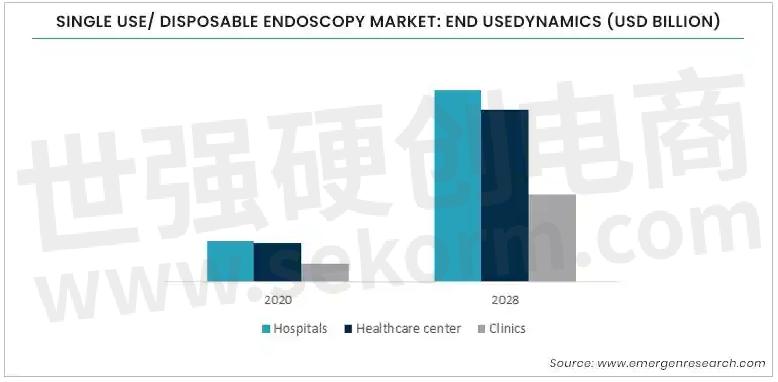Single-Use Endoscopes: A Trend Towards Safer Invasive Surgery

As the global pandemic focuses attention on infection prevention more than ever, rising concerns regarding potential risks of contamination in hospital is driving preference for single-use medical equipment, endoscopes are no exception.

Although reusable endoscopes are always sterilized after use, cross-contamination is still possible if the device isn’t cleaned adequately. Aside from a hygienic perspective, another challenge of reusable endoscopes is the difficulty in identifying internal damage.
Compared to their conventional counterpart, single-use endoscopes are known for its added advantages of increased convenience and improved patient safety. Leading endoscopy manufacturers such as Olympus, Boston Scientific or professional single-use endoscopy brand Ambu are also promoting the trend of these single-use devices. The market size of disposable endoscopes is expected to reach USD 6.29 Billion in 2028.
There are already several types of single-use endoscopes available on the market, including bronchoscopes, rhinolaryngoscopes…and much more. Some, colonoscopes and gastroscopes for instance, even come with additional water jet instruments. The market for disposable endoscopes is expected to register a CAGR of 21.1% in 2028.

3 Challenges of Single-Use Endoscope connector/Cable Selections
It seems like disposable endoscopes have multiple advantages. However, to have them function like conventional ones only with better performance, manufacturers have to consider three factors about the connection systems:
1. Cost
One of the main challenges of disposable devices is maintaining reasonable manufacturing costs while keeping performance on par with the reusable instruments. Usually, the fine wire cable assembly leads to high labor costs. Appropriate off-the-shelf medical connector with customized locking feature should also be taken into account.
2. Image Transmission Quality
The main objective of the endoscope is to provide surgeons with high-resolution images inside the patient's body. To balance the trade-off between cost and image quality, smarter computer vision software is implemented to maximize the capabilities of camera systems. In addition, disposable endoscopes also have less risk of image quality deterioration caused by the damaged cameras since the device is new for every operation.
3. Cable selection
Latency can pose a problem during live surgery. The cable of disposable endoscopes still has to perform good flex & torque for better access, stability, positioning, and targeting. The weight, length, and waterproof ability of the cable should also be considered. Meanwhile, since endoscopy is an invasive procedure that goes deep into the human body, the flexibility and biocompatibility of disposable cable material should still be carefully considered.
Nextron NxMed Series is a turnkey cabling/connector solution designed mainly for single-use endoscopes and catheters, the series has been adopted by major players with great feedback.
- +1 Like
- Add to Favorites
Recommend
- Nextron NXMed Series The Most Comprehensive Single-Use Medical Connector
- Nextron Nominated as Mechanical Design Best Practice in Ansys 2020 Innovation Conference
- Nextron‘s 1000BASE-T1 Automotive Ethernet Solution:4 way SPE circular connectors
- Nextron Owns Connection Systems For New Minimally Invasive Surgeries
- 3D Vapor Chambers: Revolutionary Heat Dissipation
- Nextron‘s Medical ATX Chassis: Design Excellence
- Nextron Collaborated with a Leading Benchmark Manufacturers of 3D mapping technology to Advance Medical Technology
- Nextron Taiwan Smart Factory Upgrade
This document is provided by Sekorm Platform for VIP exclusive service. The copyright is owned by Sekorm. Without authorization, any medias, websites or individual are not allowed to reprint. When authorizing the reprint, the link of www.sekorm.com must be indicated.





























































































































































































































































































































































































































































































































































































































































































































































































































































































